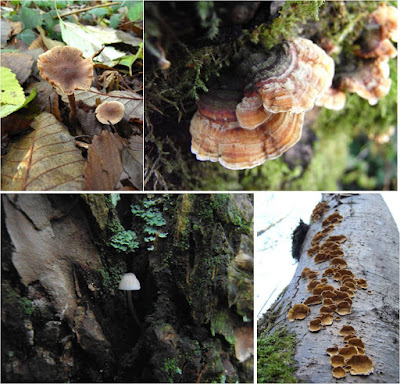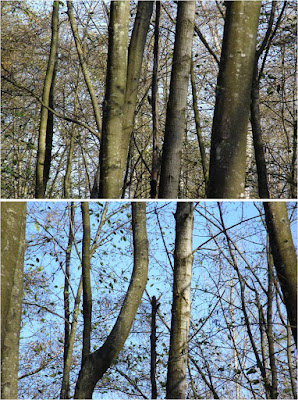 And I think I ran into the same Northern Shoveler at the same ditch as yesterday. Only this time, I managed to take better pictures. It was a lot more patient with me this time. Thanks!
And I think I ran into the same Northern Shoveler at the same ditch as yesterday. Only this time, I managed to take better pictures. It was a lot more patient with me this time. Thanks! And then the clouds slowly cleared up.
And then the clouds slowly cleared up. While I was in the Terra Nova Rural Area, there was a bird up on the tree that doesn't look like a crow at all.
While I was in the Terra Nova Rural Area, there was a bird up on the tree that doesn't look like a crow at all. Then I realized it is some kind bird of prey. But it flew away and a couple of crows chased after it too.
Then I realized it is some kind bird of prey. But it flew away and a couple of crows chased after it too. I went after it to see where it went but couldn't find it. So I gave up.
I went after it to see where it went but couldn't find it. So I gave up. However, when I continued with my walk, I came across the same bird again? Is it a Northern Harrier with that smallish body size and the long tail? But how often do they perch on trees? It's times like this when I wish I have a better camera and binocular. Sigh.
However, when I continued with my walk, I came across the same bird again? Is it a Northern Harrier with that smallish body size and the long tail? But how often do they perch on trees? It's times like this when I wish I have a better camera and binocular. Sigh. Then some kid and his guardian walked by, loudly, causing me to around (to glare at them) and then only to watch the bird flew away from me again. Arghh.
Then some kid and his guardian walked by, loudly, causing me to around (to glare at them) and then only to watch the bird flew away from me again. Arghh.Off in the distance, the Snow Geese are still here and making tons of noises when they took off.
 This tree stump is kind of like a highway system (for insects). I saw at least four or five species of insects walking across this stump as I was feeling bored and taking pictures of the spider. Pretty soon, I was taking pictures of other insects too.
This tree stump is kind of like a highway system (for insects). I saw at least four or five species of insects walking across this stump as I was feeling bored and taking pictures of the spider. Pretty soon, I was taking pictures of other insects too. Then the fog slowly rolled in as I was walking back home.
Then the fog slowly rolled in as I was walking back home. Before going back, I went back to the same spot in the Natural Park to take some more pictures of those interesting-looking insects. I think there was more today than yesterday. And it turns out that these aren't insects at all (according to wikipedia). Head over to Wanderin' Weeta for better pictures and links with more information.
Before going back, I went back to the same spot in the Natural Park to take some more pictures of those interesting-looking insects. I think there was more today than yesterday. And it turns out that these aren't insects at all (according to wikipedia). Head over to Wanderin' Weeta for better pictures and links with more information.As I was leaving the dyke trail, the setting sun was giving off this beautiful orange-pinkish color to the clouds.























































